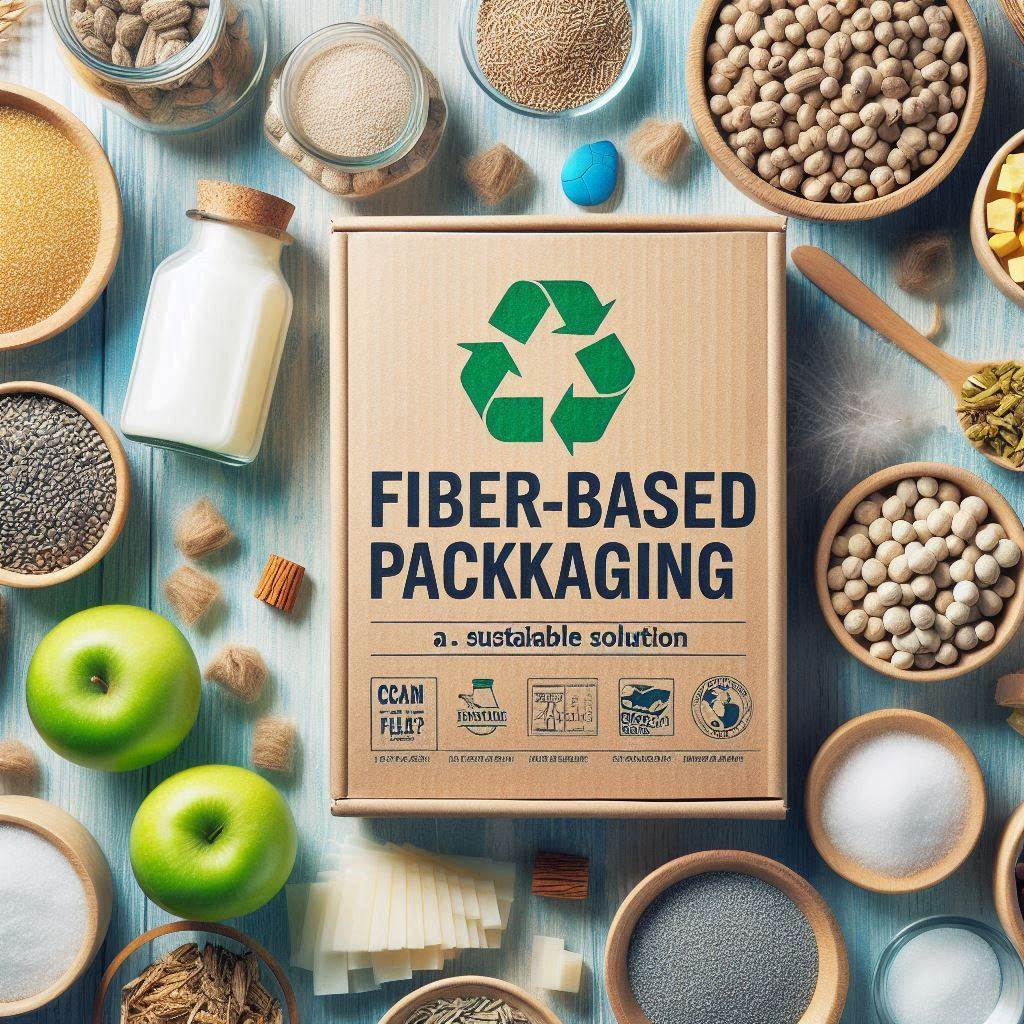As sustainability becomes a critical priority for businesses in the USA and Canada, fiber-based packaging is emerging as an ideal alternative to traditional plastic-based options. This eco-friendly packaging solution is made from renewable materials like wood pulp and recycled fibers, offering a range of environmental and practical benefits.
Here’s how fiber-based packaging is transforming industries across North America.

What Is Fiber-Based Packaging?
Fiber-based packaging is made from natural fibers like wood, paper, and plant-based materials. These materials are processed into forms like cartons, trays, and containers used in various industries. Unlike plastic, fiber-based packaging is biodegradable and recyclable, making it an environmentally responsible choice.
Why Fiber-Based Packaging Is Growing in the USA and Canada
- Sustainability Focus: Governments and businesses across the USA and Canada are prioritizing sustainability goals, and fiber-based packaging fits perfectly into this framework. With environmental regulations tightening, companies are turning to renewable materials to reduce their carbon footprint.
- Recyclability and Waste Reduction: Fiber-based packaging is fully recyclable, aligning with Canada’s Zero Plastic Waste initiative and sustainability efforts in U.S. cities like San Francisco and Seattle. Consumers are also driving demand for eco-friendly packaging, particularly in the food, beverage, and e-commerce sectors.
- Versatility Across Industries: Fiber-based packaging is used in a wide range of sectors in both the USA and Canada, from food packaging (like paperboard cartons) to protective packaging (such as molded pulp). Its adaptability makes it a favorite for businesses aiming to reduce plastic usage.
- Consumer Demand for Eco-Friendly Products: In both markets, consumers are increasingly choosing brands that offer sustainable packaging options. Brands adopting fiber-based packaging are enhancing their appeal to eco-conscious shoppers, gaining a competitive edge.
Key Benefits of Fiber-Based Packaging in North America
- Eco-Friendly: Made from renewable resources, fiber-based packaging helps reduce plastic waste and minimize the environmental impact of packaging.
- Recyclable: Both the USA and Canada have robust recycling infrastructures, making fiber-based packaging easy to recycle and supporting circular economies.
- Renewable and Compostable: Some fiber-based packaging materials, like bagasse (sugarcane waste), are compostable, further reducing waste in landfills.
- Strength and Durability: Fiber-based packaging can be customized to provide strength and protection, especially in the shipping and logistics sectors, which are key industries in both the USA and Canada.
Challenges and Opportunities
Although fiber-based packaging has many environmental advantages, challenges such as higher production costs and energy use must be addressed. However, the North American market is witnessing innovation in materials and technology to reduce these challenges, making fiber-based packaging an increasingly viable solution.
The Future of Fiber-Based Packaging in the USA and Canada
The trend towards sustainable packaging solutions is expected to grow, especially with continued governmental support for reducing plastic waste. In both the USA and Canada, industries are embracing fiber-based packaging as a critical component of their sustainability strategies. As more businesses make the shift, fiber-based packaging will play an essential role in creating a greener future for North America.
Conclusion
For businesses in the USA and Canada, fiber-based packaging is not just an environmental responsibility but also a strategic advantage. It offers versatility, consumer appeal, and aligns with growing regulatory demands for sustainability. By investing in fiber-based solutions, companies can reduce their carbon footprint, meet consumer expectations, and gain a competitive edge in the North American market.
